| 1 |
The UE initiates the UE Requested PDU Session Establishment procedure by transmitting a NAS message containing a PDU Session
Establishment Request within the N1 SM container. The PDU Session Establishment Request includes a PDU session ID, Requested
PDU Session Type, a Requested SSC mode, 5GSM Capability PCO, SM PDU DN Request Container, Number of Packet Filters, and optionally
Always-on PDU Session Requested.
|
| 2 |
The AMF performs SMF selection as described in 3GPP specification. |
| 3 |
The AMF includes EPS Interworking Indication in the Nsmf_PDUSession_CreateSMContext Request message sent to the SMF. This
parameter indicates whether the UE can perform 4G to 5G handover (and vice versa) and if it is allowed with or without the
presence of the N26 interface between the AMF and MME.
|
| 4 |
If the EPS Interworking Indication received from the AMF indicates that the UE supports EPS interworking and the SMF determines
(for example, if EPS interworking is allowed for this DNN and S-NSSAI based on UE subscription data) that the PDU session
supports EPS interworking, the PGW-C+SMF FQDN for the S5/S8 interface is included in the Nudm_UECM_Registration Request message.
|
| 5 |
The SMF sends either Nsmf_PDUSession_CreateSMContext Response (Cause, SM Context ID or N1 SM container (PDU Session Reject
(Cause))) or an Nsmf_PDUSession_UpdateSMContext Response depending on the Request received in Step 3.
If the SMF received Nsmf_PDUSession_CreateSMContext Request in Step 3 and the SMF can process the PDU Session Establishment
Request, the SMF creates an SM context and responds to the AMF by providing an SM Context Identifier.
|
| 6 |
(Optional). If the Request Type in Step 3 indicates "Existing PDU Session", the SMF does not perform secondary authorization
and authentication.
If the Request Type received in Step 3 indicates "Emergency Request" or "Existing Emergency PDU Session", the SMF does not
perform secondary authorization and authentication.
If the SMF needs to perform secondary authorization and authentication during the establishment of the PDU Session by a DN-AAA
server as described in 3GPP TS 23.501, section 5.6.6, the SMF triggers the PDU session establishment authentication and authorization as described in 3GPP TS 23.501, section 4.3.2.3.
|
| 7a |
If dynamic PCC is to be used for the PDU Session, the SMF performs PCF selection as described in 3GPP TS 23.501, section 6.3.7.1. If the Request Type indicates "Existing PDU Session" or "Existing Emergency PDU Session", the SMF uses the PCF already selected
for the PDU Session. Otherwise, the SMF may apply local policy.
|
| 7b |
The SMF performs the mapping of PCC rules and 5G QoS parameters to 4G TFTs and 4G QoS as described in the Generating EPS PDN
Connection Parameters from 5G PDU Session Parameters section in this document. Based on the QoS flows, the SMF+PGW-C also
determines the number of dedicated bearers required for the session when it hands off to EPS and the required flows (all non-GBR
flows) in the default bearer. The SMF+PGW-C saves the mapping of 5G flows to 4G bearers.
|
| 8 |
If the Request Type in Step 3 indicates "Initial request", the SMF selects an SSC mode for the PDU Session as described in
3GPP TS 23.501, section 5.6.9.3. The SMF also selects one or more UPFs as needed as described in 3GPP TS 23.501, section 6.3.3.
|
| 9 |
The SMF performs an SMF-initiated SM Policy Association Modification procedure as defined in 3GPP TS 23.502, section 4.16.5.1 to provide information on the Policy Control Request Trigger conditions that have been met. If Request Type is "initial request"
and dynamic PCC is deployed and PDU Session Type is IPv4 or IPv6 or IPv4v6, the SMF notifies the PCF (if the Policy Control
Request Trigger condition is met) with the allocated UE IP address/prefix(es).
SMF+PGW-C initiates the EBI allocation procedure as defined in 3GPP TS 23.502, section 4.11.1.4.
|
| 10 |
If the Request Type indicates "initial request", the SMF initiates an N4 Session Establishment procedure with the selected
UPF. Otherwise, it initiates an N4 Session Modification procedure with the selected UPF.
If multiple UPFs are selected for the PDU Session, the SMF initiates N4 Session Establishment/Modification procedure with
each UPF of the PDU Session in this step.
|
| 11 |
In the non-roaming or LBO scenario, the PGW-C+SMF includes the mapped EPS bearer context(s) and the corresponding QoS flow(s)
to be sent to the UE in the N1 SM container. The PGW-C+SMF also indicates the mapping between the QoS flow(s) and mapped EPS
bearer context(s) in the N1 SM container. The PGW-C+SMF also includes the mapping between the received EBI(s) and QFI(s) in
the N2 SM information to be sent to the NG-RAN. The PGW-C+SMF sends the N1 SM container and N2 SM information to the AMF through
the Namf_Communication_N1N2MessageTransfer message.
|
| 12 |
The AMF sends N2 PDU Session Request (N2 SM information, NAS message (PDU Session ID, N1 SM container (PDU Session Establishment
Accept))) to the (R)AN.
The AMF sends the NAS message containing PDU Session ID and PDU Session Establishment Accept targeted to the UE and the N2
SM information received from the SMF within the N2 PDU Session Request to the (R)AN.
|
| 13 |
The (R)AN may issue AN-specific signaling exchange with the UE that is related with the information received from the SMF.
For example, in case of an NG-RAN, an RRC Connection Reconfiguration may take place with the UE establishing the necessary
NG-RAN resources related to the QoS rules for the PDU Session Request received in Step 12.
|
| 14 |
(R)AN issues N2 PDU Session Response (PDU Session ID, Cause, N2 SM information (PDU Session ID, AN Tunnel Info, List of accepted/rejected
QFI(s), User Plane Enforcement Policy Notification)) to the AMF.
|
| 15 |
The AMF sends Nsmf_PDUSession_UpdateSMContext Request (N2 SM information, Request Type) to the SMF.
The AMF forwards the N2 SM information received from (R)AN to the SMF.
|
| 16a |
The SMF initiates an N4 Session Modification procedure with the UPF. The SMF provides AN Tunnel Information and the corresponding
forwarding rules to the UPF.
|
| 16b |
The UPF provides an N4 Session Modification Response to the SMF.
If multiple UPFs are used in the PDU session, the UPF in Step 16a refers to the UPF terminating N3.
After this step, the UPF delivers any downlink packets to the UE that may have been buffered for this PDU session.
|
| 17 |
The SMF sends Nsmf_PDUSession_UpdateSMContext Response (Cause) to the AMF. |
| 18 |
(Conditional) The SMF sends Nsmf_PDUSession_SMContextStatusNotify (Release) to the AMF.
If during the procedure, any time after Step 5, the PDU Session establishment is not successful, the SMF informs the AMF by
invoking Nsmf_PDUSession_SMContextStatusNotify (Release). The SMF also releases any N4 session(s) created, any PDU session
address if allocated (for example, IP address) and releases the association with PCF, if any.
|
| 19 |
If the PDU Session Type is IPv6 or IPv4v6, the SMF generates an IPv6 Router Advertisement and sends it to the UE via N4 and
the UPF.
|
| 20 |
If the PDU Session Establishment failed after Step 4, the SMF performs the following:
-
The SMF unsubscribes to the modifications of Session Management Subscription data for the corresponding (SUPI, DNN, S-NSSAI),
using Nudm_SDM_Unsubscribe (SUPI, Session Management Subscription data, DNN, S-NSSAI), if the SMF is no more handling a PDU
session of the UE for this (DNN, S-NSSAI). The UDM may unsubscribe to the modification notification from UDR by Nudr_DM_Unsubscribe
(SUPI, Subscription Data, Session Management Subscription data, S-NSSAI, DNN).
-
The SMF deregisters for the given PDU session using Nudm_UECM_Deregistration (SUPI, DNN, PDU Session ID). The UDM may update
corresponding UE context by Nudr_DM_Update (SUPI, Subscription Data, UE context in SMF data).
|




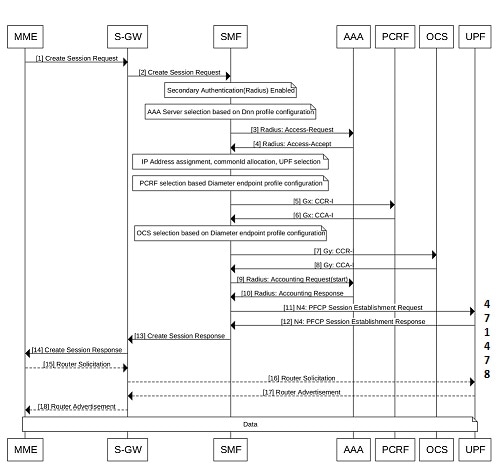




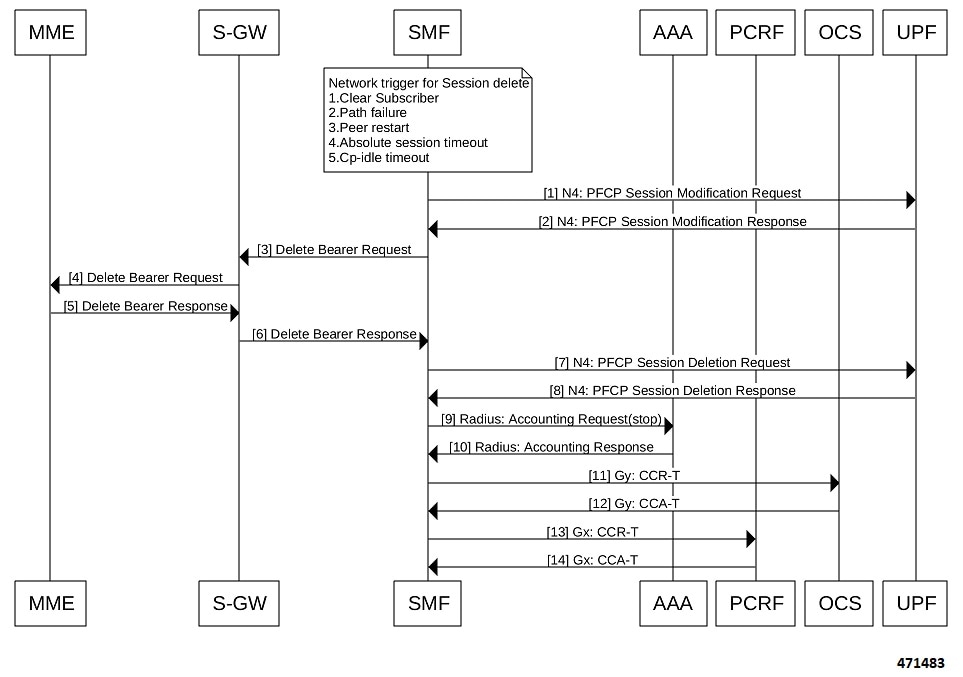

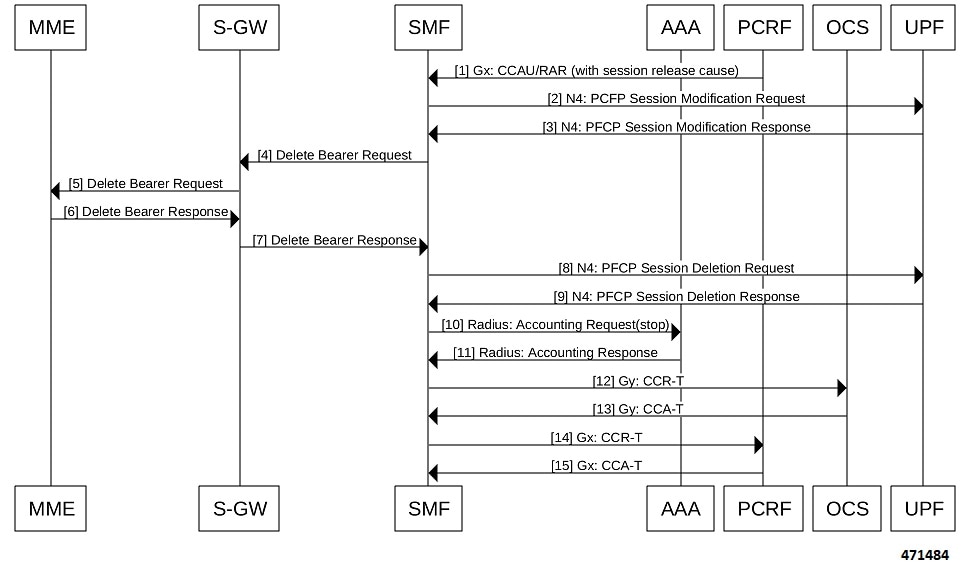
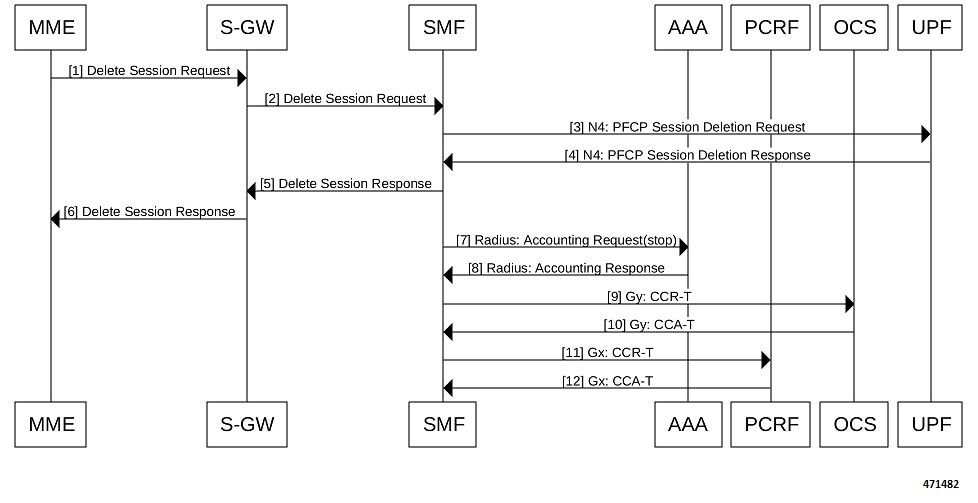










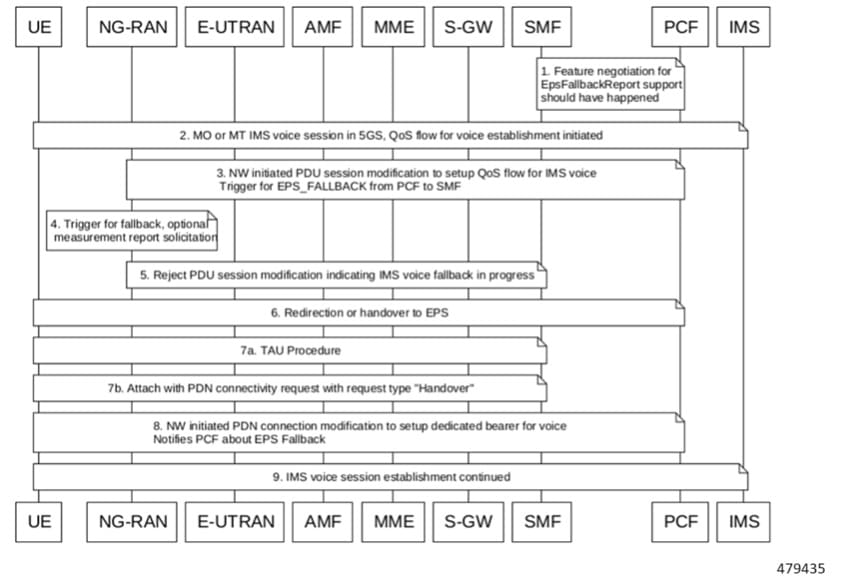




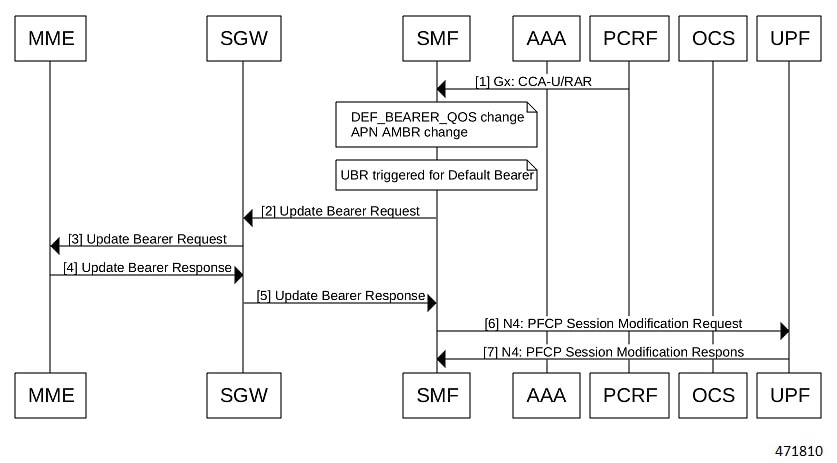

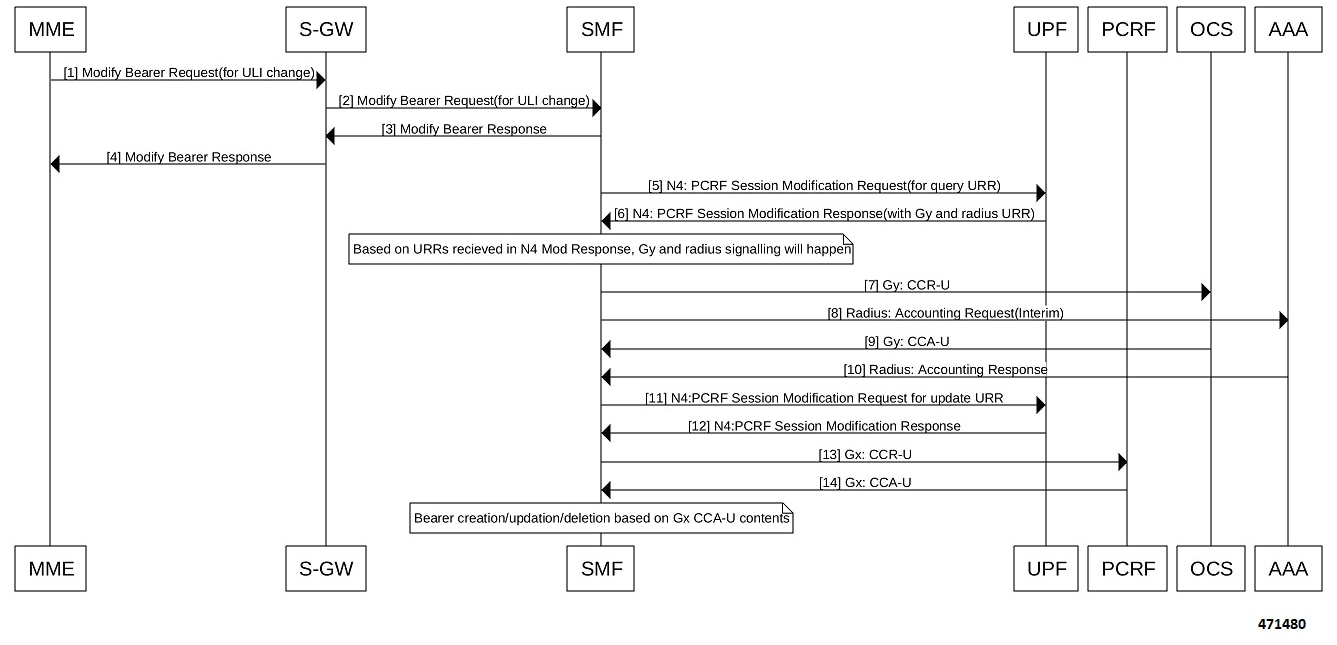











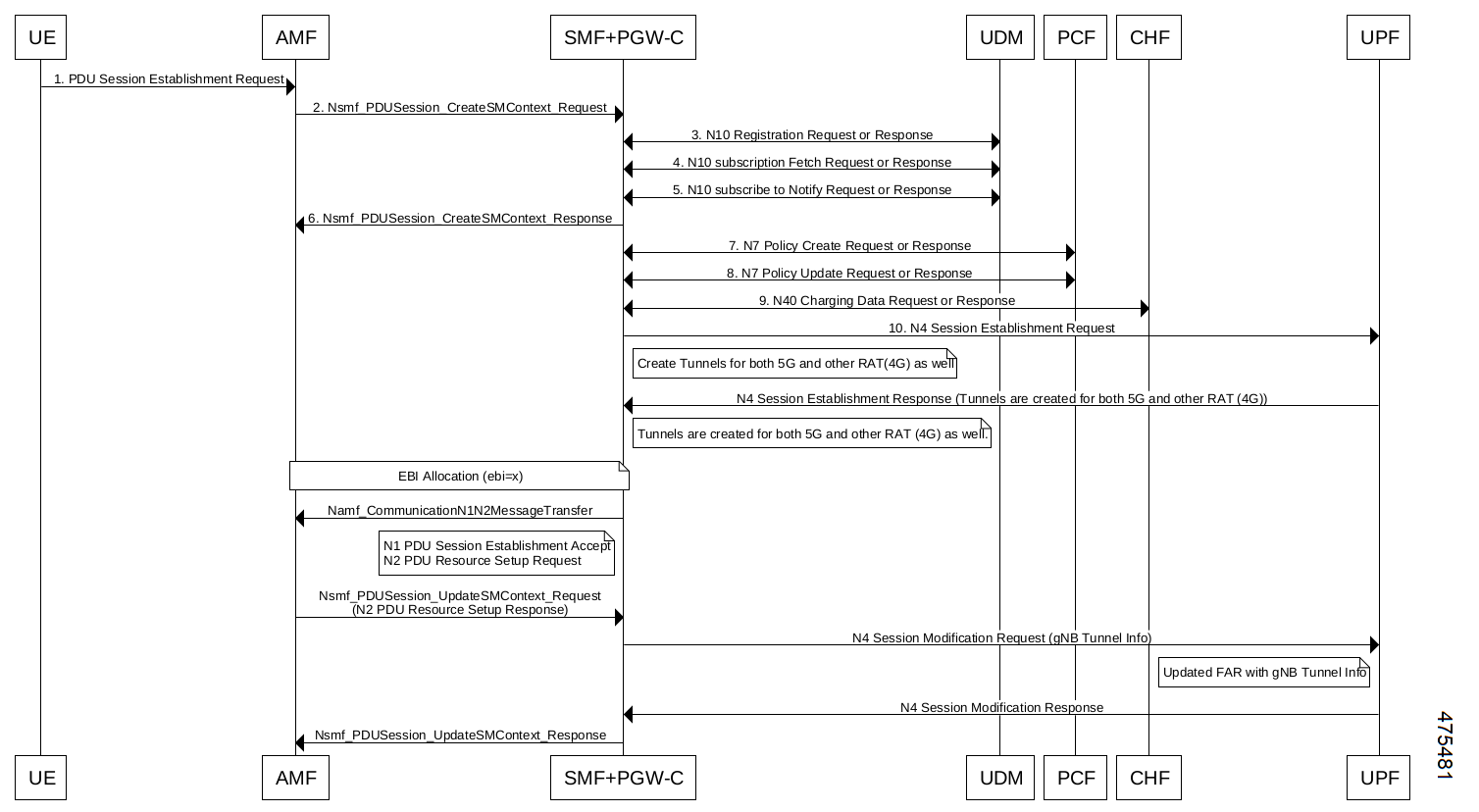










 Feedback
Feedback